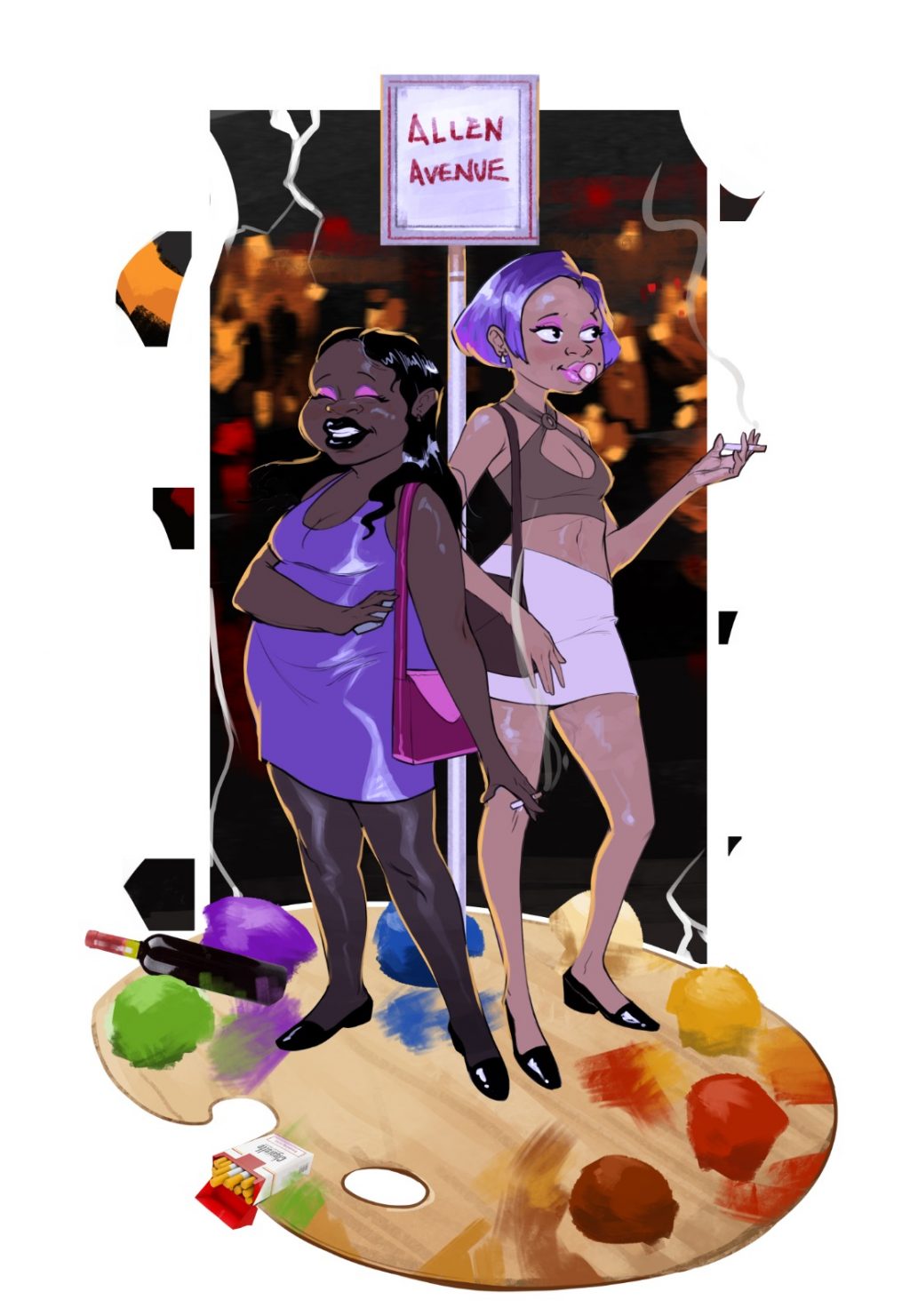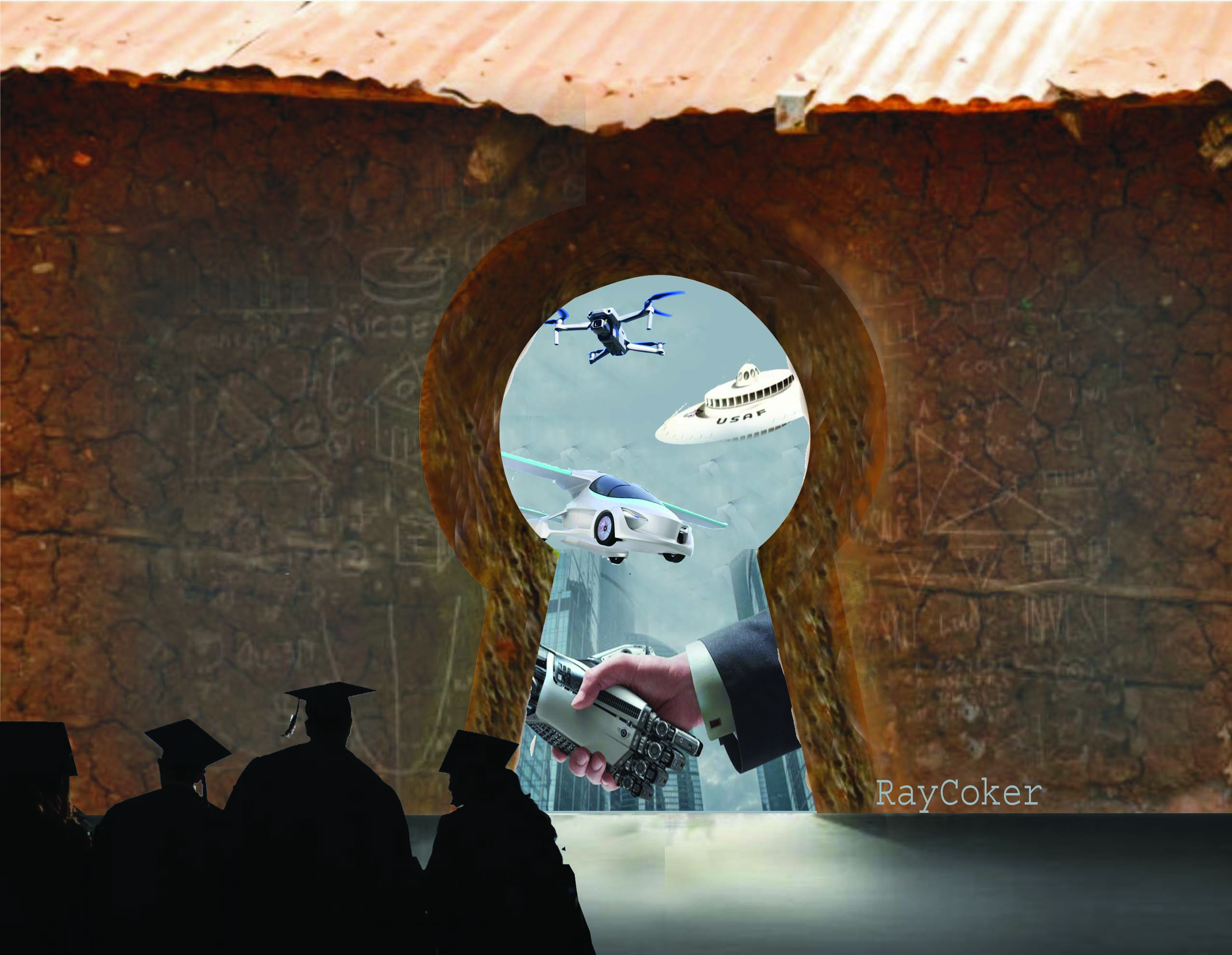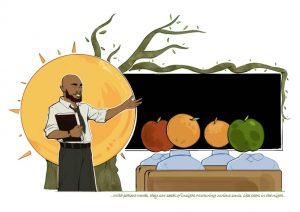
Illustration by Clinton AJ
Allen Junction Tale
Day and Night they sail
Trading their wares, souls and hearts
Niche demonic slants
Bàtà sex at night
Like paints on pallets
They dot roundabouts
Boobs, hips and thighs, light up nights
Trading their daylights
For deadly floodlights
Allen Junction babe
Turns self to a bait
Waits earnestly for the prey
Allen Junction game
Ain’t no room for shame
At devil’s temple
Pleasure seekers pool
Gets lost in lust carnival
Wild fire kindle
Engulfs their middle
Allen Junction date
Weather, danger, faith
Arrests, and Aids, sure will fail
Babes go for the bail
Guys just wanna stray
Sodom, Gomorrah
Oh Goriola!
Run to Jah, Ayilara
Quit now, Defilers
Ruin not HIS quarters.
Background to the Poem
Allen Avenue is a central business district. It is home to notable brands and many bank buildings and offices in Ikeja, Lagos. What you see during the day is a sharp contrast to what it is at night on Allen Avenue.
At night, Allen turns to a red-light district that is bustling with activities: music blaring, burbling eateries where people take delight in relaxing and having fun.
The poem Allen Junction Tale written by Adebayo Coker is a didactic poem, and we see him go to a great extent of moralizing and predicting the consequence of the immorality in the community.
Narrative Techniques:
Allen Junction Tale adopts the form of 6 stanzas with 5 lines each. Again, each stanza has its lines arranged in 5,5,7,5,5 syllables, respectively.
The 1st stanza encapsulates the activities of ladies of the night around Allen Avenue. Here, Coker moralizes by saying people go there to trade their souls, hearts, and bata sex for money, signifying fun, gambling and lust.
2nd Stanza: The poet compares the way the ladies dot around the roundabout to a painter’s pallet with various colours of paints surrounding it to ensure the colours don’t mix for proper application. This also reveals the other side of the poet as a fine artist who from time uses the pallet. He goes further to give readers vivid images of these hookers exhibiting their boobs, hips and thighs under the streetlights that line the avenue.
3rd Stanza: The poem describes how dangerous the vocation can be for patrons of the young ladies. The girls pretend to be innocent and vulnerable but only pose to catch their prey- men. It is also ironic that the men who feel they are taking advantage of these ladies are in actuality the victims of the shameful game.
4th -5th Stanza: In the reverie of the carnival-like nights, the people are lost in their lust. Many contract HIV AIDS, and other deadly venereal diseases or are robbed of their valuables or incriminated in some crimes, all is tinged, if not flooded, with risk.
6th Stanza: The last stanza ends on an invocational note with an allusion to biblical Sodom and Gomorrah which were destroyed for similar acts. The poem goes on to warn similar spots around the city, as exemplified by Ayilara in Surulere, and Goriola in Ajegunle, where ladies of the night converge for their trade. In the last two lines, the poet commands that these whores and defilers quit their game and desist from polluting and ruining the land with their sinful acts.
Oh Goriola!
Run to Jah, Ayilara
Quit now, Defilers
Ruin not HIS quarters.
The poet use Simile by comparing the convergence of the ladies around the roundabout like dots of paints on pallets
“Like paints on pallets
They dot roundabouts”
The use of homophones when read aloud is impressionable as used in the 4th stanza.
“Gets lost in lust carnival”
In the last stanza a deliberate and unpretentious use of capital letters are used to refer to God. This shows the spiritual slant of the poem
In conclusion, the poem in its moralistic and spiritual form, appeals to readers’ minds of spirituality.





















